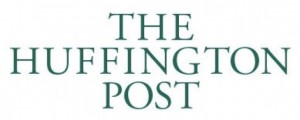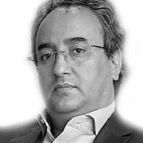Updated
15 Years of Wise Leadership in Morocco
Ahmed Charai of the Huffington Post tells the often overlooked story of Morocco’s progressive path to reform, facilitated by a unique political and social culture, that weathered the violent unrest that swept much of the Arab world:
 On August 21, Moroccans celebrated the birthday of King Mohammed VI. The occasion comes at a time of glaring contrast between the North African kingdom’s ongoing development and stability on the one hand, and the massive bloodshed wracking the Arab world on the other. In Morocco today, there is a revolutionary new constitution, fine-tuned to the aspirations of the population). Women are on the way to achieving their due status and rights. The Arab Muslim majority population celebrates the country’s hybrid, Jewish minority and Berber heritage. Jihadist groups — even as they gain unprecedented power in Syria and Iraq and threaten Africans from Egypt to the Sahel — are hard pressed to harm the kingdom thanks to the vigilance of the Moroccan police.
On August 21, Moroccans celebrated the birthday of King Mohammed VI. The occasion comes at a time of glaring contrast between the North African kingdom’s ongoing development and stability on the one hand, and the massive bloodshed wracking the Arab world on the other. In Morocco today, there is a revolutionary new constitution, fine-tuned to the aspirations of the population). Women are on the way to achieving their due status and rights. The Arab Muslim majority population celebrates the country’s hybrid, Jewish minority and Berber heritage. Jihadist groups — even as they gain unprecedented power in Syria and Iraq and threaten Africans from Egypt to the Sahel — are hard pressed to harm the kingdom thanks to the vigilance of the Moroccan police.

Ahmed Charai, Board of Directors of the Atlantic Council; Board of Trustees of the Center for Strategic and International Studies;
Boards of Trustees of the Foreign Policy Research Institute and the National Interest.
Only three and a half years ago, the idea that Morocco would evolve differently than its Arab neighbors did not seem, to many observers, to be a foregone conclusion. High hopes had been placed on “Arab spring” states, then in the midst of overthrowing their rulers. International interest in Morocco was limited to the street demonstrations of the time — and speculation as to whether they would grow fiercer. But the real story of Morocco, harder for outsiders to perceive in 2011, lies in the reasons why the country bucked the revolutionary trend: King Mohammed VI had been working since the beginning of his reign to address young people’s concerns before they had even voiced them. By the time the protests had begun, the country was well on its way to realizing freedoms and opportunities which Arabs across the region are still a generation away from attaining. The monarch built on the legacy of his late father, Hassan II, but also broke with it — reconciling the kingdom’s traditions with the 21st century, and tackling daunting social challenges which had gone largely unaddressed.
The first major street protests under King Mohammed VI began a decade before the Arab spring, in March 2000. Back then, the main fault line of civil unrest was a conflict between modernizing forces and Islamist movements. The social democrats in parliament had been pressing for reforms in family law which would raise the legal age of marriage to 18 for girls, abolish polygamy, and establish equitable legal recourse for women in divorce court, including fair division of property. Islamists opposed all of the above. The king, in his capacity as “Commander of the Faithful” — meaning, the highest ranking religious authority in the country — stepped in to reconcile the feuding forces. He used his special status to pronounce new legal norms based on the Islamic principle of “Ijtihad” (independent reasoning). These norms became known as the “Mudawana” — a personal status code guaranteeing rights to the Moroccan family. Formalized in 2004, it has rescued underage Moroccan girls from a life of subjugation and divorced women from abject poverty…[Full Story]
.l